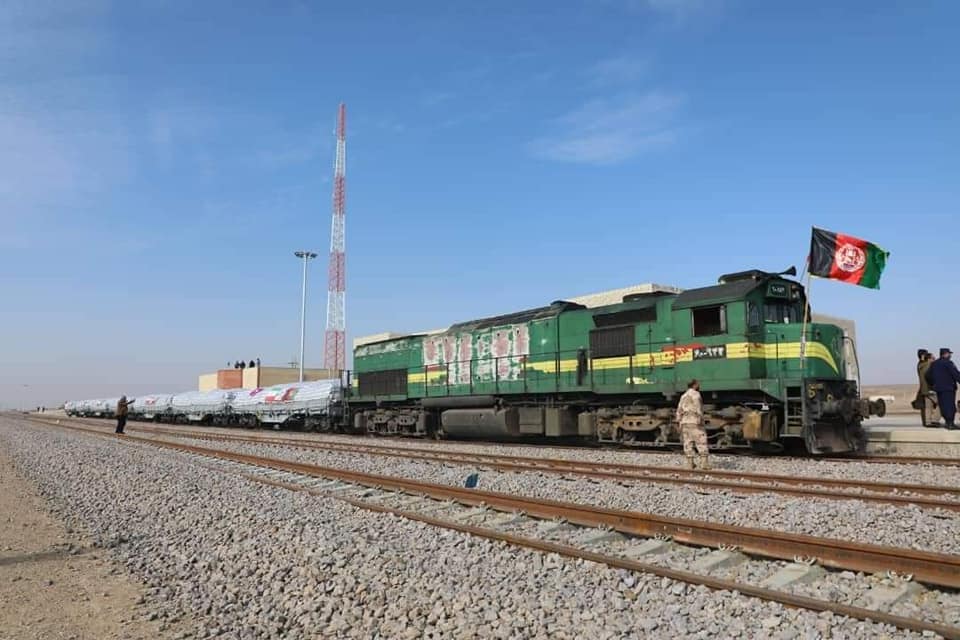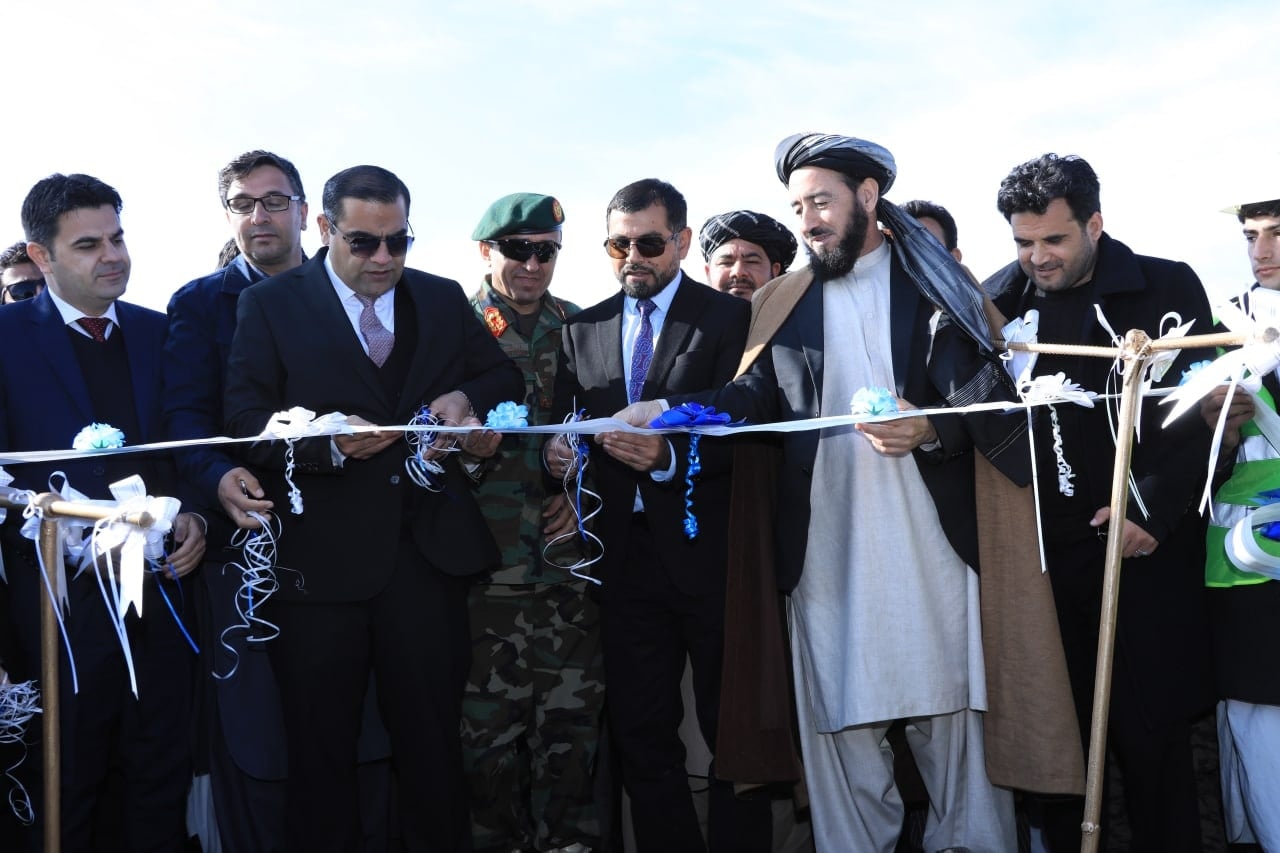
A trial freight train on 2 December 2020 delivered 500 tonnes of cement on the new railway which runs from Khaf in Iran as far as a station at Rosnak (Rahzanak, روزنک) in Afghanistan’s Herat province.

A passenger train also ran from Iran to bring officials to and from a meeting with their Afghan counterparts.
Rosnak is on the Islam Qala to Herat road to the north of Ghourian (Ghoryan, غوريان, Ghurian). Construction works can be seen in Bing maps (but not Google Maps). Jono (Jonaw, Junaw) has been mentioned previously as a station; I’m not sure whether this is referring to the same place.

The new railway is in effect an extension of the Iranian rail network across the border. After many years of proposals, construction officially began in Iran on 29 July 2006. The line is being built in four stages, with the latest section being the 62 km stage 3, and completion of the project has taken a lot longer than was envisaged.
An official opening ceremony for the first three sections of the Khaf to Herat railway is planned for 10 December 2020.
Construction of the fourth stage is being planned, with work to be undertaken in two phases with the first running to Robat Paryan and the second to Herat airport.

The Afghanistan Railway Authority said the line is one of the most important regional connectivity projects, as it will provide the land-locked country with a link to ports and to the rail networks of Iran, Turkey and Europe. Freight traffic is predicted to be around two million tonnes a year and include oil, construction materials and food.
AfRA said the operation of a passenger service is also being considered. Studies when work on the line began estimated that passenger traffic could reach 321 000 passengers/year, and freight traffic 6·8 million tonnes/year.
Place names
The romanised spelling of the various place names varies quite a bit. If you have strong views on the “correct” versions, now is the time to try to get a standard established!

A note on gauges
The new Iran to Herat railway is 1435 mm (4 ft 8½ in) gauge. Known as “standard gauge”, this is the nost widely used gauge in the world and is found in Iran, Turkey, most of the Middle East, China and most of Europe (except the former USSR, Finland, Iberia and Ireland).
The other railways into Afghanistan from Uzbekistan (1 line) and Turkmenistan (2 lines) use the 1520 mm (5 ft) broad gauge, commonly called “Russian gauge”, which is used instead of 1435 mm in the former USSR, Finland and Mongolia. Pakistan uses the even broader “Indian gauge” of 1676 mm (5 ft 6in), although the network does not reach Afghanistan.
This means that in the event of a hypothetical railway line being built from Herat to Torghundi (for Turkmenistan) or Mazar-i-Sharif (to connect with the line from Uzbekistan) there would have to be a break of gauge somewhere. While gauge-changing trains exist, for most freight you may as well just transfer containers between ordinary wagons of different gauges, which is what happens every day on the border between China and the 1520 mm gauge region.

References
















